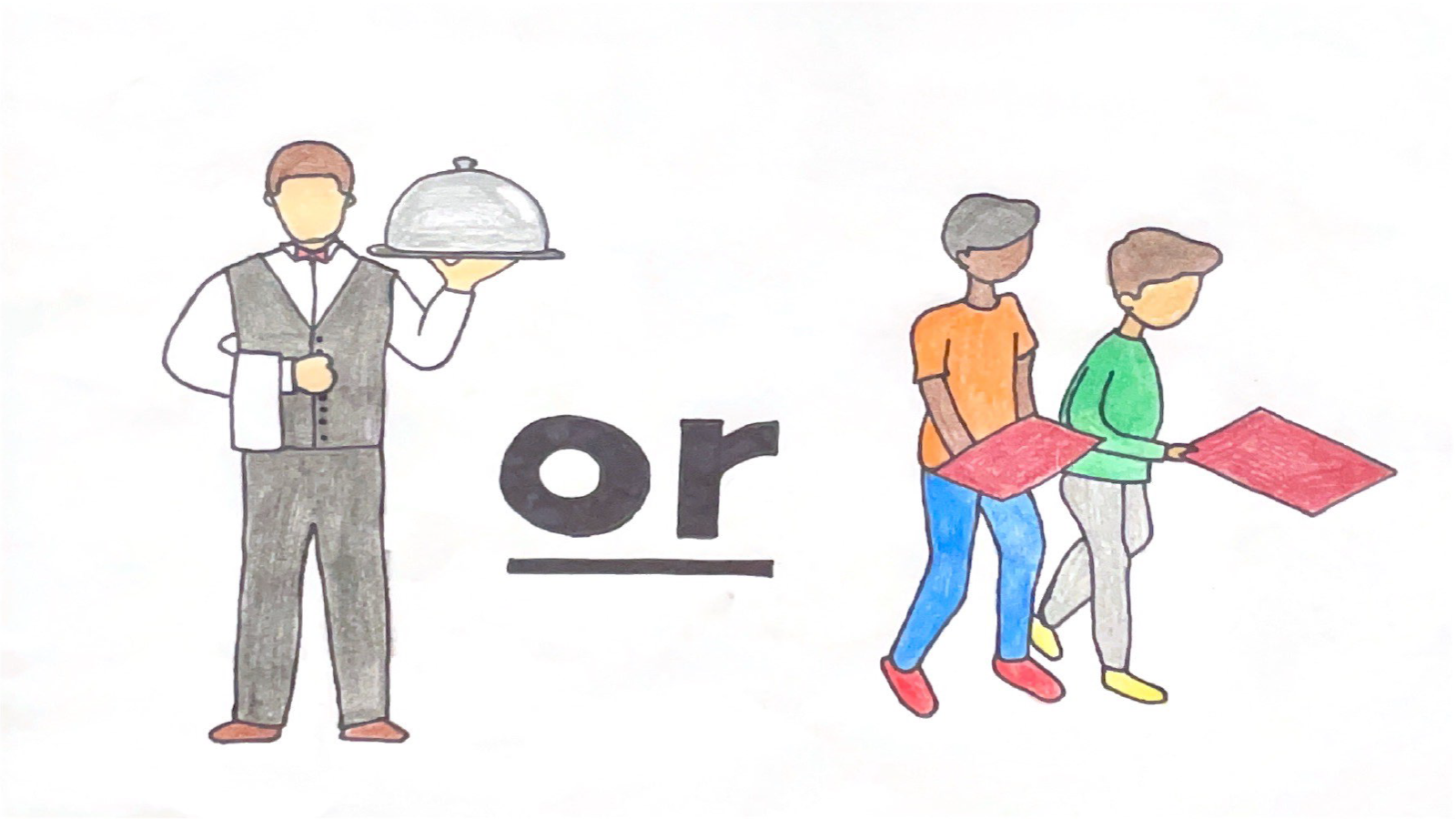For Walk-through (Luke):
What is worse than coming into the lunch room after a nice weekend and having to look for your seating assignment. Everyone is crowding around the single board with 450 tiny names telling each person where to go. Once you finally shove your way through the crowd five minutes later, the dreaded W appears next to your name. You shuffle into the kitchen and pick up a tray to start the worst few weeks of your life.
This is the fiasco of sit-down lunch. Of course people might argue that it’s “rooted in tradition” but is there anyone around who still has coat tails or rides horses to school? Some things need to be left in the past, including seating assignments. Walk-through lunch however, is societies’ greatest achievement. Rather than be crammed next to a bunch of people who they don’t know, lunch enthusiasts get to choose who they sit with, allowing for variation every day.
To be frank, the task of a waiter is equivalent to the highest form of punishment possible to mankind. After waiting for the food in the kitchen, they have to bring it to the table and immediately lose any hope of a panini. They then must sit down at the end of the table since everyone took the good seats and watch as the food is passed down right before their eyes. Once they get the food, they can enjoy it for a nice and pleasant five minutes before they have to get up again to clean up everyone else’s dirty dishes and shuttle them over to the dish counter. Why bother with this when students can get their own food and clean up after themselves in a fraction of the time?
Additionally, under a walk-through system, students can come and go as they please. While of course it is nice to sit down for a meal with friends, this isn’t always feasible. Students every day are getting busier and busier with extra help, time consuming sports and extracurricular activities. To fit this into a schedule would be a breeze if they didn’t have to sit down and waste time sitting around, rather than grabbing a quick bite to eat. This also means less congestion in the lunchroom and an easier time for the lunch staff.
With fewer students and formalities, less waste is collected. Each table would usually have three big bowls and three tongs/spoons. Now multiply that by 23 and that’s 138 more significantly larger items to wash. In addition, the waiters converge on the one dish counter to deposit their dishes all at once in the waning minutes of the lunch period. Why bother with the messy shoving when the used dishware can trickle in throughout lunch and make it a much easier job for the lunch staff? In the end, the switch is clear, walk-through is better than sit-down.
For Waiters (Lev):
Since the school was founded in 1923, Belmont Hill has built its core principles of character, integrity, and tradition. A key part of our tradition is family-style, sit-down lunches, and waitering. Every Belmont Hill seventh grader has gone through the woes of being a new waiter, not knowing what to do, when to do it, and how to do it. However, it is through these tribulations that vital skills are developed; asking for help, logical thinking, and compassion. Each one of us knows how annoying it can be to clean up a messy plate from an ignorant student who clearly has never waitered before. However, it is from these experiences that we become more considerate and tidy during lunch, not wanting to burden the waiter anymore than he already is.
Waitering also makes it easier on the dining staff who wash our dishes; the waiters stand in a line and take turns, rather than kids randomly throwing dishes and expecting them to be taken instantaneously. Waitering also allows for a traditional family-style meal; without waiters, kids get up every five minutes, interrupting conversation and rushing others.
Aside from the act of waitering, assigned seating allows for students to meet other students from their own and different forms. Many of the older students that I knew well originally sat at my lunch table. Assigned seating also forces students to meet new teachers. These teachers may one day teach the students and, already having a relationship with your teacher before the first day of class can be a huge advantage.
I do recognize that the task of waitering can be daunting, especially when it’s your first time. However, most students waiter just once in a whole school year, and having your plate, glass, and silverware cleaned for you everyday is not so bad for the price of waitering once.
Some may claim that walk-thru produces less waste, however this is simply not true. In Food Committee meetings, Ms. Wu has said on multiple occasions that walk-thru creates far more waste than regular sit-down lunches. This is because waitered meals are more orderly and organized, so that the teacher at the table can advise kids to finish food on their plates or to only get a partial food refill.
Last, there simply would not be enough space to clear everything if we were to have a daily walk-thru system. If you have ever waitered before, you know that you can wait anywhere 1-5 minutes to clear your tray at the window. Now, multiply that by 100; there would be an enormous bottleneck at the dish service window. Proctors would have to monitor when kids could clear their plates, slowing down the speed of lunch.
In the end, while Wednesdays and Fridays offer nice breaks from the regular lunch, chaos would ensue if walk-thru lunch were a daily practice. And so I rest my case: family-style lunches and waitering is here to stay.






